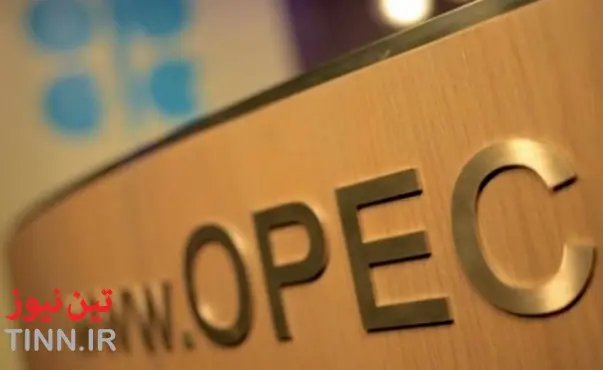|
Code:
112388
|
Tanker operators hope new routes will offset impact of OPEC cut

TIN news: Tanker owners are bracing for a volatile year ahead after enjoying some of the highest charter rates since 2008, with OPEC plans to curb crude output potentially cutting rates by more than 40 percent.
Fewer Middle East cargoes will mean lower freight rates for operators of very large crude carriers (VLCC), the biggest tankers in operation, which can carry 2 million barrels of oil and are used mostly by Middle East producers sending supplies to Asia.
With average VLCC rates around $45,200 a day, supertanker earnings are on course to finish 2016 at their second highest since 2008, the start of the worst downturn in 30 years which saw average rental prices collapse to a low of $15,500 in 2011.
But Morgan Stanley forecast average VLCC rates could fall over 44 percent to $25,000 a day next year from current levels if the Organization of the Petroleum Exporting Countries (OPEC) and exporters like Russia limit output to 32.5 million barrels per day (bpd) from Jan. 1, 2017.
This would reduce VLCC demand by over 30 tankers a year, shippers said, equivalent to almost 5 percent of the global fleet of 700 VLCCS.
“Any cut to oil production is negative for tankers as it reduces the quantities of oil,” said Ralph Leszczynski of ship broker Banchero Costa in Singapore.
“However, if most of the cuts fall on the Saudis this could have some positive implications for the tanker market in terms of increased tonne miles from other oil producers,” he added, helping to offset the negative impact.
BP is already shipping almost 3 million barrels of U.S. crude to customers across Asia, pioneering an ultra long-haul operation.
With U.S. shale production ticking up and non-OPEC producers such as those in central Asia also eyeing increases, rates could be supported for smaller Suezmax and Aframax tankers which ply these routes carrying 1 million barrels and 800,000 barrels of oil respectively.
One headache shippers can’t shake is the growing fleet following years of over-investment during China’s mega-boom.
Around 110 VLCCs and Suezmaxes will hit the oceans next year, compared to 80 such ships in 2016, said Robert McLeod, chief executive of tanker owner Frontline, putting pressure on tanker earnings unless falling rates and new environmental controls trigger scrappings of older tankers.
But while 2017 still looks challenging, the outlook improves after that.
With new tankers deliveries set to slow in 2018 and 2019, oil demand growth seen strong, and old ships being scrapped, Morgan Stanley increased its average VLCC rate forecasts to $32,000 per day in 2018 and $42,000 per day in 2019.
Fewer Middle East cargoes will mean lower freight rates for operators of very large crude carriers (VLCC), the biggest tankers in operation, which can carry 2 million barrels of oil and are used mostly by Middle East producers sending supplies to Asia.
With average VLCC rates around $45,200 a day, supertanker earnings are on course to finish 2016 at their second highest since 2008, the start of the worst downturn in 30 years which saw average rental prices collapse to a low of $15,500 in 2011.
But Morgan Stanley forecast average VLCC rates could fall over 44 percent to $25,000 a day next year from current levels if the Organization of the Petroleum Exporting Countries (OPEC) and exporters like Russia limit output to 32.5 million barrels per day (bpd) from Jan. 1, 2017.
This would reduce VLCC demand by over 30 tankers a year, shippers said, equivalent to almost 5 percent of the global fleet of 700 VLCCS.
“Any cut to oil production is negative for tankers as it reduces the quantities of oil,” said Ralph Leszczynski of ship broker Banchero Costa in Singapore.
“However, if most of the cuts fall on the Saudis this could have some positive implications for the tanker market in terms of increased tonne miles from other oil producers,” he added, helping to offset the negative impact.
BP is already shipping almost 3 million barrels of U.S. crude to customers across Asia, pioneering an ultra long-haul operation.
With U.S. shale production ticking up and non-OPEC producers such as those in central Asia also eyeing increases, rates could be supported for smaller Suezmax and Aframax tankers which ply these routes carrying 1 million barrels and 800,000 barrels of oil respectively.
One headache shippers can’t shake is the growing fleet following years of over-investment during China’s mega-boom.
Around 110 VLCCs and Suezmaxes will hit the oceans next year, compared to 80 such ships in 2016, said Robert McLeod, chief executive of tanker owner Frontline, putting pressure on tanker earnings unless falling rates and new environmental controls trigger scrappings of older tankers.
But while 2017 still looks challenging, the outlook improves after that.
With new tankers deliveries set to slow in 2018 and 2019, oil demand growth seen strong, and old ships being scrapped, Morgan Stanley increased its average VLCC rate forecasts to $32,000 per day in 2018 and $42,000 per day in 2019.















![AIRBUS A380 [MORE THAN 600 PASSENGER’S CAPACITY PLANE]](https://cdn.tinn.ir/thumbnail/4jCp4EQvCU0b/IjHVrSYQrIAqIzXuTzADR7qLYX4idQT4nfq__26E5SCUPLMqfhWkWajvuO9Wfq1ql1TjV4dhkrHliNQU82kMpo2NNftT_NGEwHc9KXtN_rk731bmifa2IQ,,/airbus-a380-structure1.jpg)

Send Comment